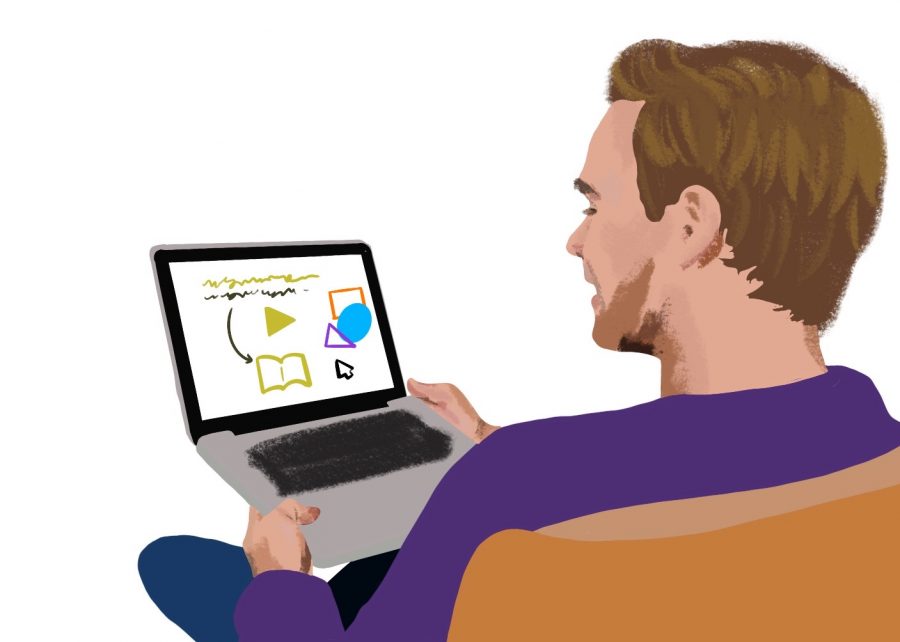Online classes began to be popularized just a few decades ago. They are advertised as a way for adults to finish their education and students to learn the material at their own pace — it is far more compatible for people with busy schedules.
But after being enrolled in an online course last fall semester, I have come to realize first-hand that online classes are not the promising educational opportunities they are made out be.
For many students at San Diego State, online classes are merely a means to fulfill course and unit requirements.
There is a lack of willingness and desire to learn. Students are simply not motivated in online classes. They are usually easy A’s and are time efficient, but student learning outcomes tend to be lackluster. Students simply complete their assignments to receive credit for a passing grade, rather than genuinely engaging with the course material.
Because online courses tend to have more than 100 students, most of the assignments are short and simple. Assignments are designed to be graded easily to accommodate such a large number of students instead of being assignments where students can interact with the material more in depth.
Because there are no scheduled meeting times for class, students must rely on self-discipline to get through the material on their own. Many students, especially procrastinators, may find themselves cramming for assignment deadlines and exams because they did not plan out study session times throughout the semester. This is not an effective way to learn.
Perhaps the biggest disadvantage of taking an online class is the absence of face-to-face interaction between the teacher and their students.
Live sessions are infrequent and often are scheduled during the middle of the day when students have to attend other classes or work. The office hours of the professor may also be during inconvenient times for many students as well. Most interaction with the professor has to be through email which is often direct and impersonal. It is nearly impossible for students to build a relationship with their professor.
Students cannot raise their hands to ask questions during a lecture to clarify information or to share their own ideas with the class. This makes it more difficult for students to understand the material and build new connections in their brain.
There is also little interaction amongst students. It can be harder to create study groups and form relationships with their peers. Students do not have the same opportunities to make new friends or network with people in their field. Most communications are through emails, discussion chains or group chats. Face-to-face interaction is minimal if it is even there at all.
Online classes also require either a computer or laptop and a reliable internet connection. Not all students have access to these types of resources, whether it be for financial or other reasons, and it can put them at a disadvantage to their other classmates.
Offering online classes certainly helps students who would otherwise not be able to attend in-room class sessions. However, they fail to provide a genuine education with an emphasis on convenience rather than critical thinking. We need online classes to restructure themselves so students can have a learning experience that will actually provide quality education.
Catherine Van Weele is a sophomore studying political science. Follow her on Twitter @catievanweele.








